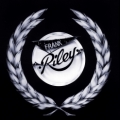How do I identify this engine?
I assumed my '49 Super Six had a 262 in it, but my memory of my '51 that I had 48 years ago, is that 262 was cast in the front of the head.
I am including some pics of my blank head, the stamping on the pad on the front right, and the casting number on the left rear of the head.
Can anyone help me with identification?
Thanks
0
Comments
-
Thanks Ken, you may be right about the narrow block, but it is not an aluminum head.Does anyone know how to decode the numbers?Thanks0
-
The information Ken gave you is correct.excepting the info on the aluminium head. The only thing I would add is starting in 1950 the number "500" appeared on the 232 narrow head block to differentiate it from the standard 262 which as Ken said did not have a number on the head until 51. The cast iron head you have pictured is a 48-9 vintage 262 head. The prime number is the Hudson part number and the second number is the casting number very likely assigned to it by the foundry. Generally Hudson head numbers can be tough to track because of running changes made. Not all head numbers appear in parts books.0
-
The information Ken gave you is correct.excepting the info on the aluminium head. The only thing I would add is starting in 1950 the number "500" appeared on the 232 narrow head block to differentiate it from the standard 262 which as Ken said did not have a number on the head until 51. The cast iron head you have pictured is a 48-9 vintage 262 head. The prime number is the Hudson part number and the second number is the casting number very likely assigned to it by the foundry. Generally Hudson head numbers can be tough to track because of running changes made. Not all head numbers appear in parts books.
Thanks Lance0 -
Just to add to the trivia around the early 262 heads... Some had a larger combustion chamber on number 6 to lower the compression ratio. Supposedly because they were having early failures of the number 6 rod bearing. I heard that some time later they discontinued that compression change and the rod bearing problem did not reoccur.
My Super Six number 491146762 had this modification. My wide block 53 262 does not have any difference in the combustion chambers.
I took a picture of the head bottom side but can't find it. Maybe lost in a couple computer updates..
0 -
That is interesting Dave. I hadn't heard about #6 head combustion chamber volume being larger then the others before. I'm still learning new information about Hudson.
Do you know how much difference there is between # 6 and the other 5 combustion chambers?
Thanks Dave
Lee O'Dell0 -
The close up pic of the cylinder head shows the top number is the part/casting number, last digit isa 6 which is one digit higher than the actual part number for the early cast iron head.The lower digits are the date of this head casting, (71248) or July 12, 1948."Ric"0
-
That is interesting Dave. I hadn't heard about #6 head combustion chamber volume being larger then the others before. I'm still learning new information about Hudson.
Do you know how much difference there is between # 6 and the other 5 combustion chambers?
Thanks Dave
Lee O'Dell
Lee. No idea, but it was enough to be visible! Seems like it would cause an uneven idle, but it idled smoothly. Bernie Siegfried (sp?) told us that at a National in Indianapolis many years ago.
0
This discussion has been closed.
Categories
- 36.9K All Categories
- 112 Hudson 1916 - 1929
- 20 Upcoming Events
- 92 Essex Super 6
- 28.6K HUDSON
- 571 "How To" - Skills, mechanical and other wise
- 995 Street Rods
- 151 American Motors
- 178 The Flathead Forum
- 49 Manuals, etc,.
- 78 Hudson 8
- 44 FORUM - Instructions and Tips on using the forum
- 2.8K CLASSIFIEDS
- 608 Vehicles
- 2.1K Parts & Pieces
- 77 Literature & Memorabilia
- Hudson 1916 - 1929 Yahoo Groups Archived Photos

